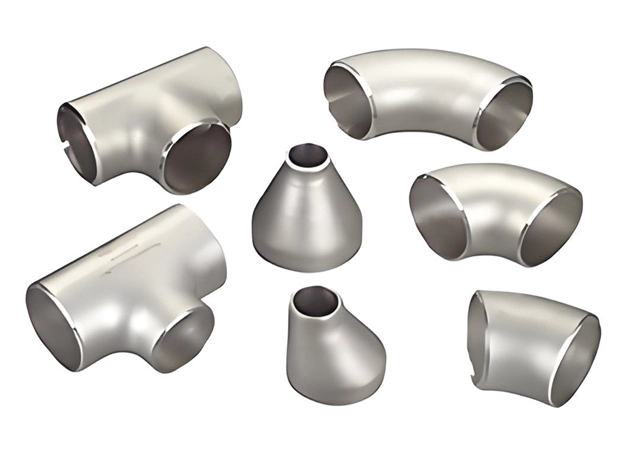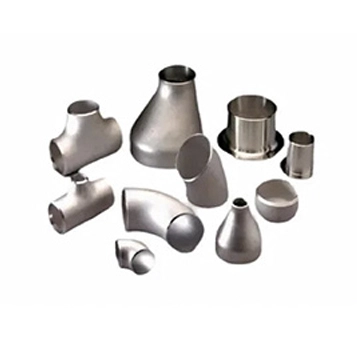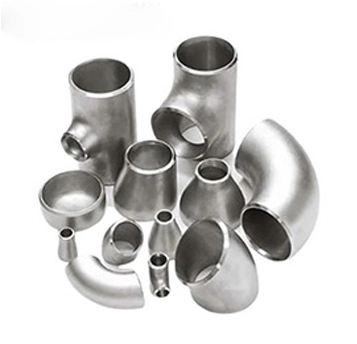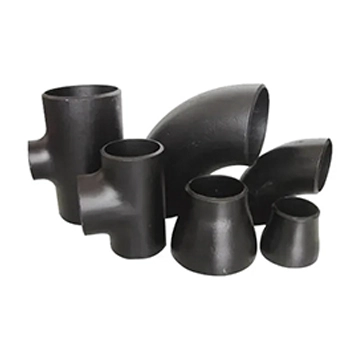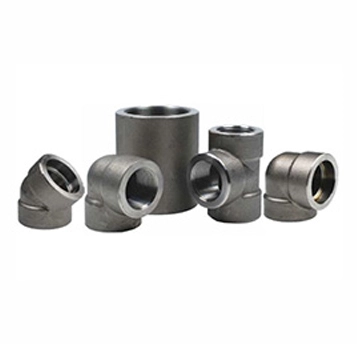What is Butt Weld pipe fitting?
Butt weld fittings are components used in piping systems to connect, change direction, or alter the flow of pipes. They are designed to be welded directly to the pipe, creating a strong, seamless, and leak-proof joint. Common types include elbows, tees, reducers, and caps, which are used for changing direction, branching, reducing pipe size, or sealing the end of a pipe, respectively.
These fittings are typically made from materials like carbon steel, stainless steel, or alloy steel, matching the pipe material to ensure compatibility. Butt weld fittings are preferred in high-pressure and high-temperature applications due to their durability, strength, and smooth interior surface, which minimizes turbulence and pressure drop in the flow. They are widely used in industries such as oil and gas, chemical processing, and power generation.
Types of Butt-Weld Pipe Fittings
Butt-weld pipe fittings come in various types, each serving a specific function in piping systems. The main types include:
Elbows: Used to change the direction of flow. Common angles are 45° and 90°.
Tees: Allow flow to be split or combined, available in equal or reducing sizes.
Reducers: Connect pipes of different diameters. Types include concentric (aligned centers) and eccentric (offset centers).
Caps: Seal the end of a pipe.
Stub Ends: Used with lap joint flanges for easy disassembly.
Crosses: Provide four-way connections, splitting flow into three directions.
Nipples: Short pipe segments used for extensions or connections.
Material of Butt-Weld Pipe Fittings
Carbon Steel
ASTM A234 WPB: This is the most common material for carbon steel butt-weld fittings. It is suitable for moderate and high-temperature service.
High Yield Carbon Steel: These fittings are designed for applications requiring higher strength and are available in various grades such as A234-WPC, A420-WPL6, etc. They are suitable for low-temperature service and are often used in harsh environments .
Stainless Steel
304/304L (UNS S30400/S30403): These fittings offer excellent corrosion resistance and are suitable for a wide range of applications.
316/316L (UNS S31600/S31603): These fittings have enhanced corrosion resistance, particularly in marine and chemical environments.
Low Alloy Steel
Low alloy steel fittings are made by adding small amounts of alloying elements to carbon steel. They offer better mechanical properties and corrosion resistance compared to plain carbon steel. These fittings are ideal for applications in harsh environments such as marine and petrochemical industries .
Alloy Steel
Alloy steel fittings are made by adding multiple alloy elements to carbon steel. They provide higher strength, better heat resistance, and improved corrosion resistance. These fittings are used in extreme working conditions such as high temperature, high pressure, and strong corrosive environments .
Standards of Butt-Weld Pipe Fittings
ASME B16.9
Scope: ASME B16.9 is the primary standard for factory-made wrought buttwelding fittings. It covers overall dimensions, tolerances, ratings, testing, and markings for fittings in sizes ranging from NPS 1/2 through NPS 48 (DN 15 through DN 1200) .
MSS SP-43
Scope: MSS SP-43 is a standard for stainless steel pipe fittings, covering the dimensional requirements and pressure ratings for corrosion-resistant fittings .
ASTM A403
Scope: ASTM A403 covers the material specifications for stainless steel fittings. It ensures that the fittings meet the required chemical composition and mechanical properties .
ASTM A234
Scope: ASTM A234 covers the material specifications for carbon steel fittings. It ensures that the fittings meet the required mechanical properties and chemical composition .
EN 10204/3.1
Scope: EN 10204/3.1 is a European standard that provides certification requirements for the inspection and testing of pipe fittings .
ASME B16.25
Scope: ASME B16.25 covers the dimensions and tolerances for butt-welding ends of fittings .
NACE MR0175 / ISO 15156
Scope: NACE MR0175 / ISO 15156 covers the material requirements for resistance to sulfide stress cracking in sour gas environments .
Advantages of Butt-Welded Pipe Fittings
Butt-weld pipe fittings offer several key advantages. They provide strong, seamless connections that enhance the structural integrity of piping systems, making them highly reliable and durable. This reduces the risk of leaks and the need for frequent maintenance.
Butt-weld fittings are available in various materials like stainless steel, carbon steel, and alloy steel, ensuring excellent corrosion resistance and suitability for diverse environments. Their smooth inner surfaces minimize turbulence and pressure drop, leading to efficient fluid flow and lower energy consumption.
Additionally, these fittings can be custom-made to fit specific requirements, offering flexibility in designing complex piping systems. Overall, butt-weld fittings are cost-effective, versatile, and ideal for a wide range of industrial applications.
Applications of Butt-Welded Pipe Fittings
1. in the oil and gas industry for constructing pipelines, refineries, and offshore platforms, handling high pressures and corrosive environments.
2. In chemical processing, these fittings manage aggressive chemicals, ensuring safe and efficient operations.
3. Power generation facilities rely on them for steam and cooling systems, where high temperatures and pressures are common.
4. Water treatment plants use butt-weld fittings for their corrosion resistance, essential for transporting water and chemicals.
5. The food and beverage industry benefits from their smooth, hygienic surfaces, which prevent contamination.
6. These fittings are also vital in petrochemical plants, pharmaceutical production, and fertilizer manufacturing, where they ensure the integrity of complex piping systems.

 EN
EN
